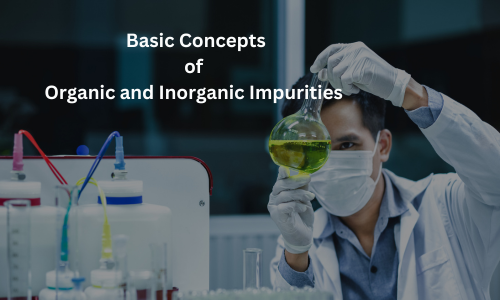1. Organic Impurities
Nature:
- Compounds containing carbon and hydrogen, along with other elements.
Source:
- Starting materials, intermediates, or by-products from chemical synthesis.
- Degradation products formed during manufacturing or storage.
- Contaminants from solvents, reagents, or catalysts.
Examples:
- Residual solvents (e.g., methanol, acetone).
- Degradation products of active pharmaceutical ingredients (APIs).
- Unreacted intermediates.
Impact:
- Can affect the efficacy, stability, and safety of the final product.
Detection:
- Typically analyzed using chromatographic techniques like HPLC, GC, or LC-MS.
2. Inorganic Impurities
Nature:
- Non-carbon-based substances such as metals, salts, or minerals.
Source:
- Reagents, catalysts, or materials used during synthesis.
- Residual metal catalysts or heavy metals (e.g., lead, cadmium).
- Inorganic salts or leachables from manufacturing equipment.
Examples:
- Sodium, potassium, or chloride ions.
- Heavy metals like mercury or arsenic.
- Residual catalysts like palladium.
Impact:
- May be toxic at certain levels, and their presence must meet regulatory limits.
Detection:
- Commonly analyzed using spectroscopic techniques like AAS, ICP-OES, or ICP-MS.
Key Difference:
- Organic impurities are carbon-based and primarily arise from the chemical structure and process.
- Inorganic impurities are non-carbon-based and often originate from external sources like equipment or reagents.
- Both types of impurities are critical to control to ensure the safety and quality of pharmaceutical products.
Read also:


